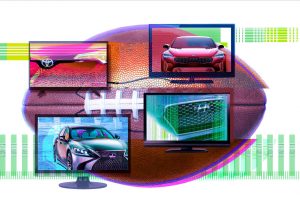 Automotive manufacturers sell dreams on Super Bowl Sunday. Lexus recently previewed a Super Bowl LII ad, “Black Panther, which equates car ownership with being a super hero. During Super Bowl LI last year, Alfa Romeo compared owning a car to flying a dragon. Kia relied on Melissa McCarthy to inject fun into owning the Kia Nero. Ford’s Go Further ad sold the dream of living a better life through innovation.
Automotive manufacturers sell dreams on Super Bowl Sunday. Lexus recently previewed a Super Bowl LII ad, “Black Panther, which equates car ownership with being a super hero. During Super Bowl LI last year, Alfa Romeo compared owning a car to flying a dragon. Kia relied on Melissa McCarthy to inject fun into owning the Kia Nero. Ford’s Go Further ad sold the dream of living a better life through innovation.
But for years, the reality of the car buying process hasn’t lived up to the dream of owning one. In the analog days, researching a car meant consulting with your uncle, finding a dog-eared blue book, and then trying to negotiate the purchase of a car based on scraps of information. But with digital research, shopping and even buying tools at our fingertips, the reality of a car purchase journey is beginning to catch up to the dream.
Digital and mobile tools are closing the gap between what OEMs sell and what consumers experience during the purchase journey. Both consumers and owners are getting smarter and more informed when it comes to fulfilling their dreams — consider:
- Shoppers visit just under 16 sites to research their purchase.[i] 61 percent of new car shoppers turn to third party marketplaces for pricing information. Marketplaces create pricing transparency.[ii]
- More than half of car shoppers have used their smartphone on dealership lots to get more information.[iii] Most often, they are looking up vehicle prices, or comparing makes and models. One-quarter are reading dealerships’ reviews. More than half visited additional dealerships based on what they found via their mobile devices.
- Consumers are visiting fewer lots than ever before: new car shoppers visited 2.3 dealerships in 2017, down from 2.9 dealerships in 2012.[iv] And 97 percent of buyers would like to connect with a salesperson before their lot visit.[v]
As a result, consumers are arriving on the dealership lot more informed and ready to negotiate on their terms. Not surprisingly, consumers are so well informed that more than half of them arrive on the lot without contacting the dealership ahead of time.
Shoppers are demanding a better experience that aligns with the dream that automotive manufacturers promise. But even with all the hours that shoppers spend extensively researching and exploring their prospective car options online, a shopper may leave the dealership feeling disappointed. Despite the pre-work and research gathered ahead of time, they’re muddled with uncertainty over if they’re getting a fair deal and best price.
But dealerships are beginning to respond and improve. For one thing, they’re meeting people where they are in their digital journeys, an example being making their inventory available on third-party marketplaces, where the emphasis is on the content of the product and price, not “look at me!” promotion.
Dealers are also becoming more transparent, taking advantage of tools made available to them by marketplaces, like price badging. Most importantly, dealerships are beginning to focus on the key element of any transaction: people. A purchase inevitably comes down to the shopper and the salesperson coming to an agreement on the lot. Shoppers want to buy a car from someone they connect with. That’s why dealers are making information about their salespeople available through online reviews that give shoppers the ability to select salespeople ahead of time.[vi]
In other words, the auto industry is catching up to the best practices of Airbnb, Amazon, Zillow, and other digital marketplaces that offer transparency and empower shoppers. This evolution is good news for both the shopper, the dealership, and the OEMs who are selling the dream.
Consumers do get inspired by the dream. Cars.com research during Super Bowl LI showed that Super Bowl ads drive shoppers. We analyzed site traffic to determine how Super Bowl LI ads affected online activity on Cars.com. We found that OEMs airing ads during the game averaged a 7 percent lift to their brand pages on Cars.com — and a 238 percent lift to pages on Cars.com for models that were specifically called out.[vii] These findings highlight the importance of marketplaces when it comes to connecting the dream to the drive.
Selling the dream is powerful. And delivering that dream through an exceptional experience falls on the dealers. And fortunately, they are starting to do just that.
[i] JD Power, JD Power New Shopper Stats, 2017 data.
[ii] JD Power New Car Auto Shopper Study, 2017.
[iii] Cars.com, Mobile Influence on Car Shopping, January 2017.
[iv] JD Power, JD Power New Shopper Stats, 2017 data.
[v] Survey of 6,413 recent car shoppers on DealerRater.com, March 2016.
[vi] Cars.com, Mobile Influence on Car Shopping, January 2017.
[vii] Cars.com, Super Bowl Auto Ads Drive Shoppers, February 6, 2017.



